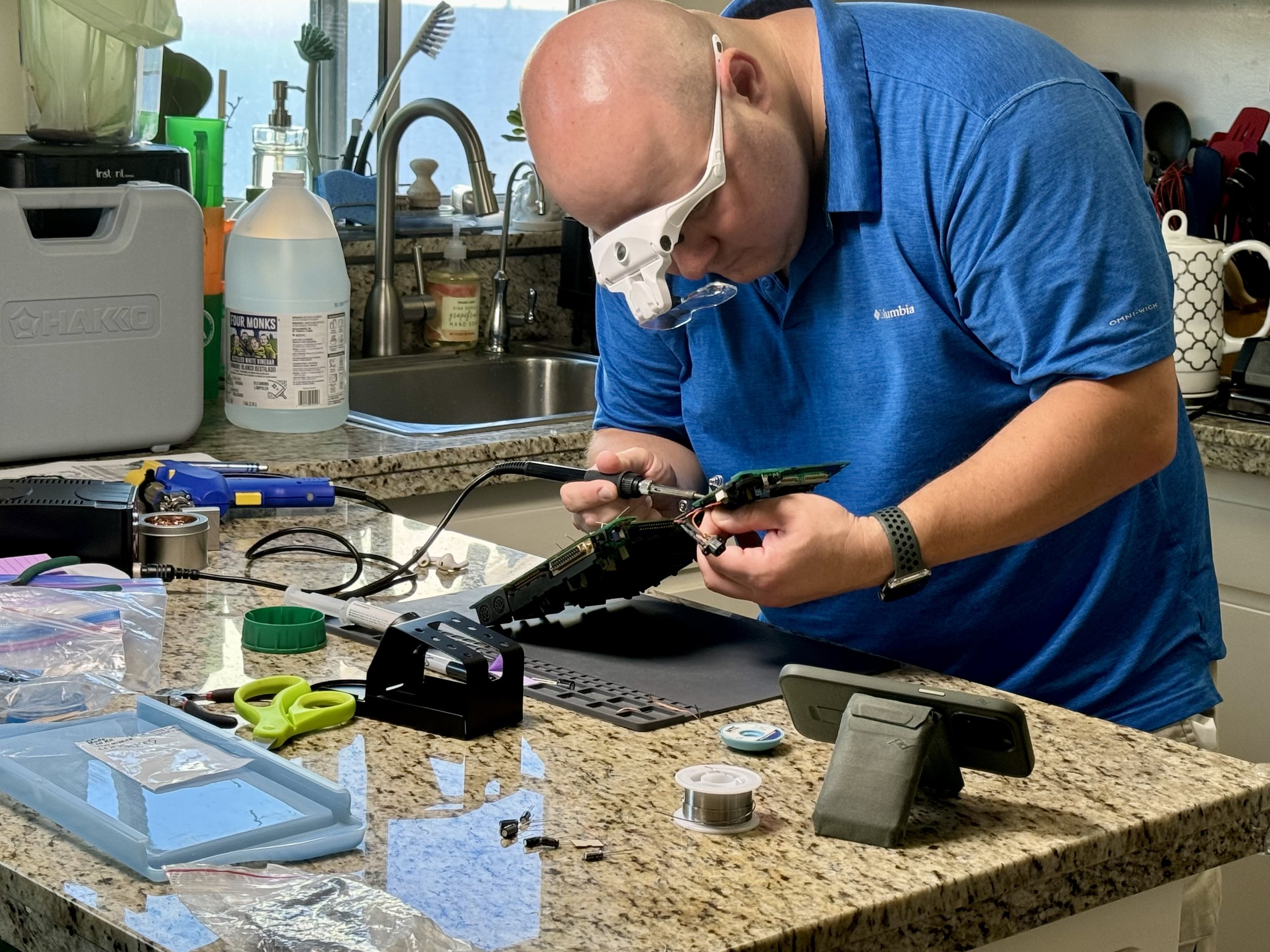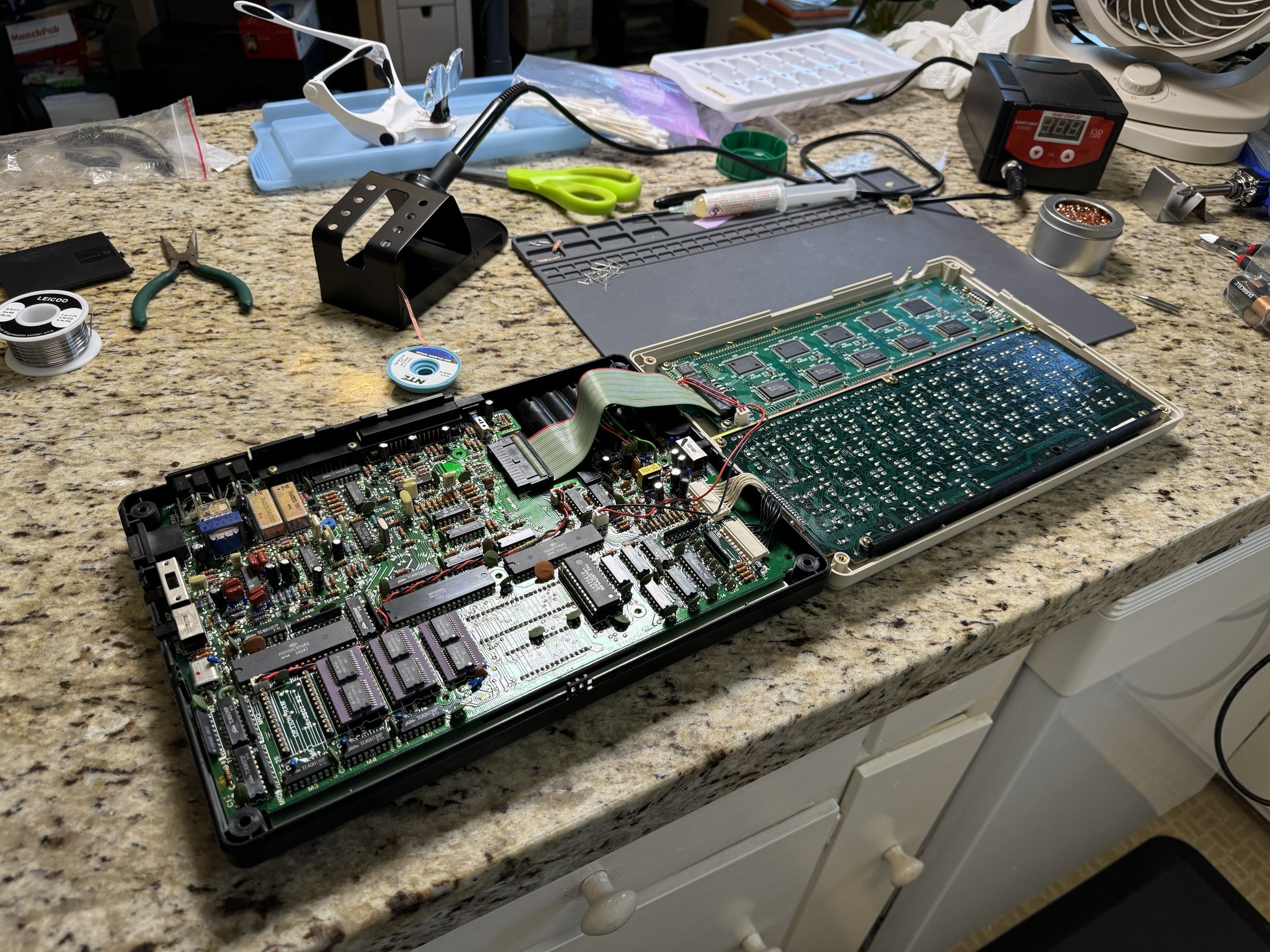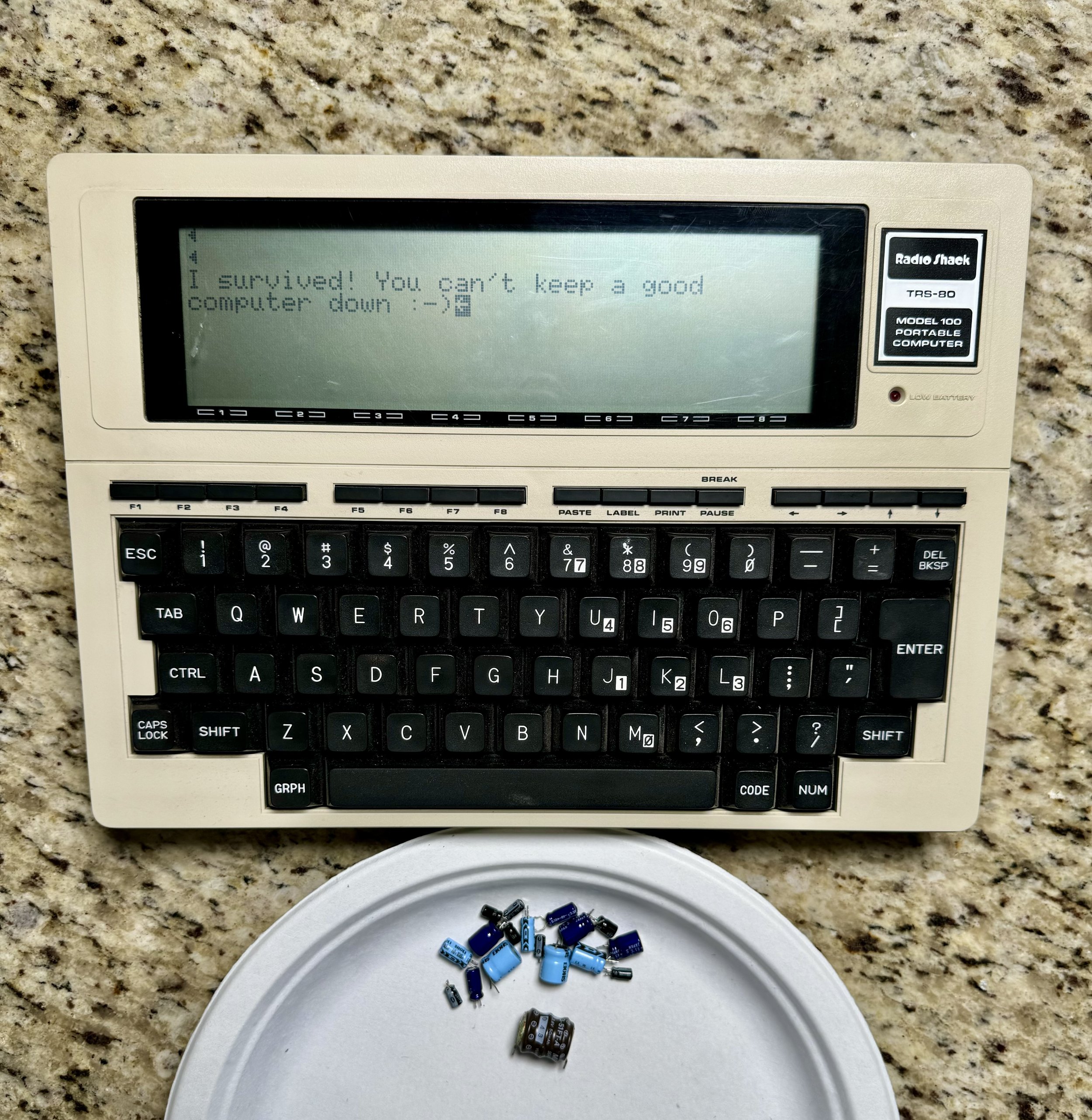Recapping the TRS-80 Model 100
One of our all-time favorite computers is the TRS-80 Model 100. Developed by Kyocera and marketed by Tandy Radio Shack, this was one of the earliest commercially-successful portable computers. Compared to other portable (aka “luggable”) machines of the early 1980’s, it’s almost miraculously small, it only weighs 3lbs, it has a bunch of useful apps built in, its keyboard is great, and it will run for hours and hours on a set of 4 “AA” batteries. Those are also the reasons it was a tremendous success in its day, especially beloved by reporters who valued its small size and rugged design while working in the field.
Of course, even its brilliant designers never imagined that anyone would still be using these things 40+ years later. In addition to some simple software tweaks (it’s not Y2K compliant!), these machines have 17 capacitors and a small battery on their motherboard, all of which are now decades past their expected lifespans. It would be bad enough if these tiny parts just stopped working, but it’s actually much worse: as they age, capacitors and batteries have a nasty habit of leaking their highly corrosive electrolytic fluid, which can eat through delicate circuits, destroy microchips, and are just generally a Very Bad Thing.
We were already planning to remove the battery since we’ve recently purchased a “solder sucker” - a device specifically designed to help remove solder from components on circuit boards. However, when we did a close inspection of the battery, not only did we see signs of corrosion on the battery, we also saw indications of acid leaks taking place around several of the tiny capacitors on the board. Not wanting our beloved Model 100 to die an untimely death, we ordered a full set of replacement parts, and on Saturday night we undertook the operation to replace the old failed capacitors with new ones.
Despite our amateur-level skills, we’re delighted to report that the surgery was a smashing success! We made a few mistakes and learned some stuff along the way, but thankfully nothing serious enough to cause any major damage. We’re also glad we did this now, as we were able to use some cotton swaps and white vinegar to remove the spilled capacitor juice from the motherboard before it could cause any catastrophic problems.
Cheers to this remarkable little computer - we’ll be exhibiting it at Retro Roadshow events for many years to come!




